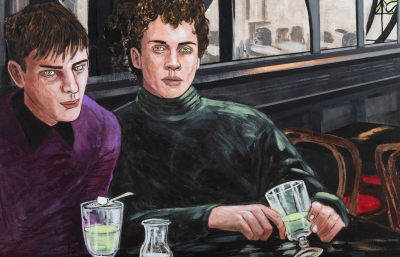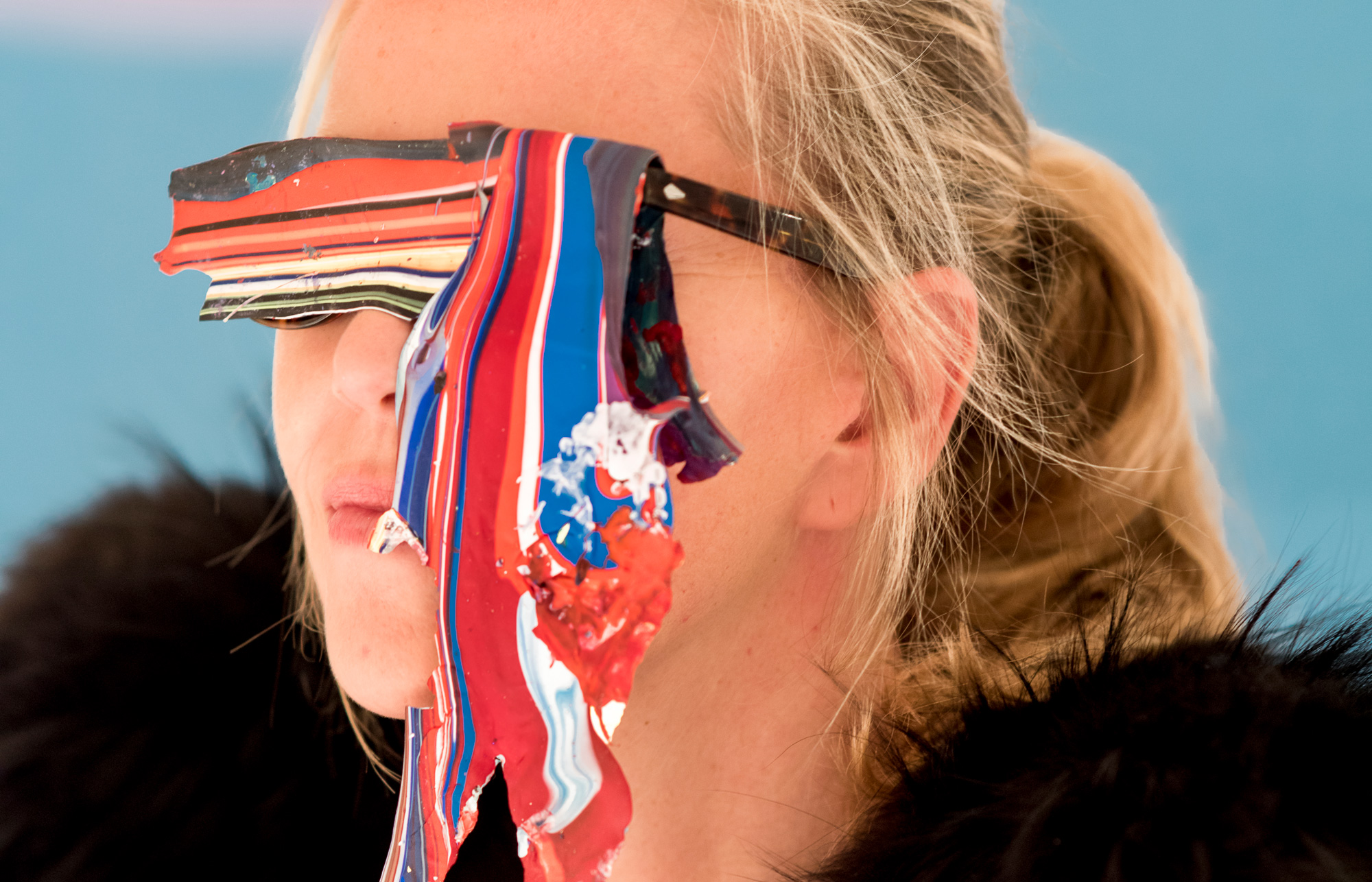
Katrin Fridriks
Clearing the Air
Interview by Gabe Scott // Portrait by Catalina Sour-Vasquez
The intensely variegated and supremely balanced work of Icelandic artist Katrin Fridriks conveys messages far beyond the abstract relationship between material and surface. To describe her paintings as contemporary Abstract Expressionism is insufficient, negligent in the recognition and analysis of its many applied sciences. Ceaseless in her exploration of form, she maintains a devout connection with the Earth, as well her own mind and body. An expert at extracting the elements of her environment, Fridriks assimilates the earth’s natural phenomena, allowing various aspects to be absorbed somatically. After lengthy preparation and contemplation, a series of swift and carefully choreographed movements serve as a transcendental projection of converted energy into color and structure. Such application of these gestures summon strength, athleticism, endurance and precision. The sum of the parts not only brings a picture into focus, but demonstrates the process as an event itself.
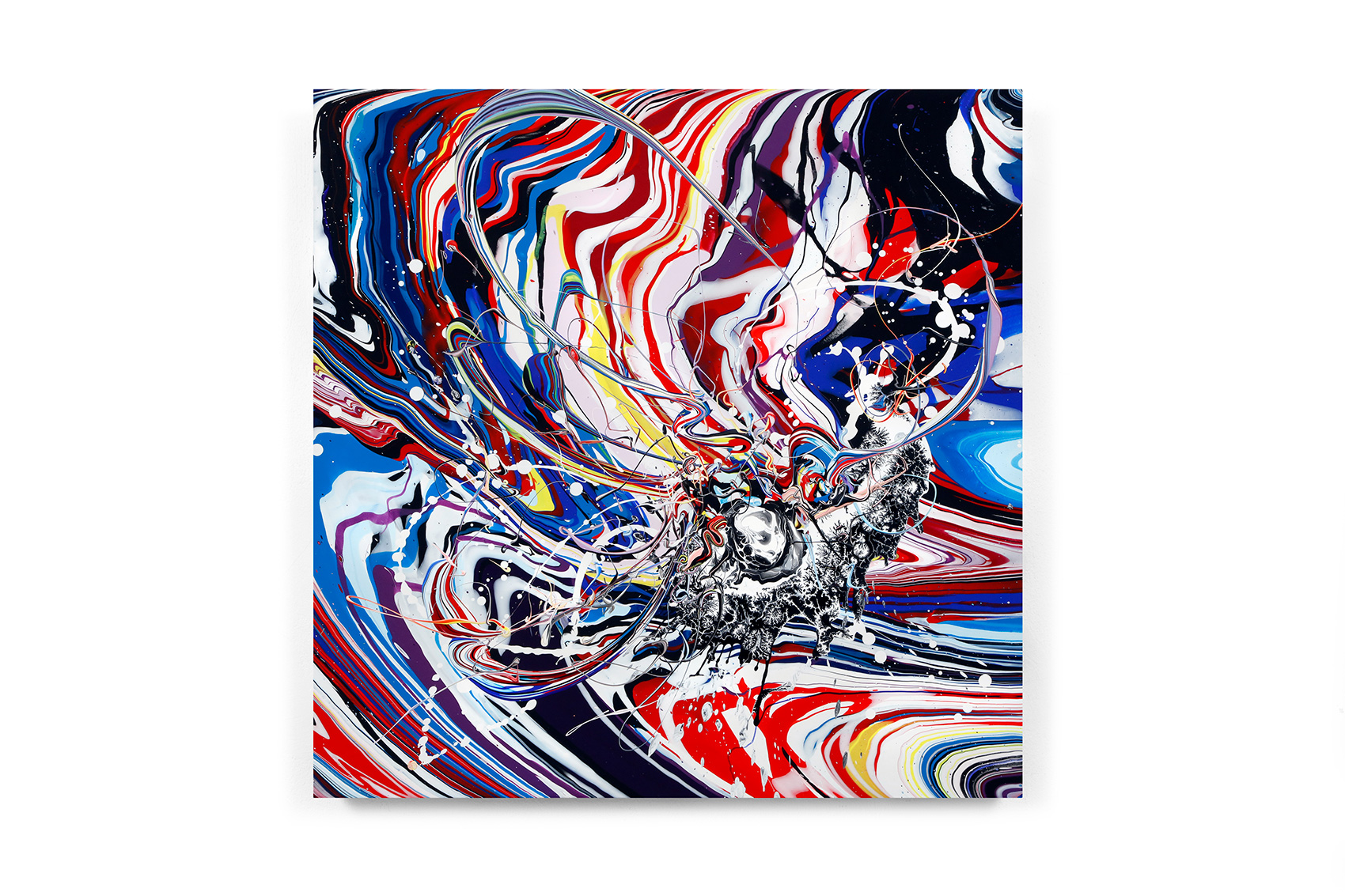
Gabe Scott: The Icelandic landscape, in relative comparison to the rest of the world, seems young, wild, untamed and in flux. I believe the same could be said about your work; like fire and ice forming and defining boundaries while testing physical limitations. Is there a congruity in that landscape in relation to your painting?
Katrin Fridriks: You’re right, Iceland is so extreme, and we don't call it the land of fire and ice for nothing. It is such a raw land! Most of the aesthetic in my painting originates there: rivers looking like veins from above, unpredictable geysers, melting glaciers and molten lava... My painting is strongly connected with these natural phenomena, both technically and mentally.
And then, of course, as a good citizen from Iceland, where we are blessed with the cleanest sustainable energy sources, I am trying to find ways to get more involved in ecology and always keeping my eyes open on the news. What's happening with our planet and water resources all around the globe? How do we generate clean energy and fight global warming? These questions have a great impact on my latest research and influence my mindset while creating.
Having those images taken from satellites looking down, the health of our planet stuck in my mind, they even remind me of my techniques; when I drop a seed of paint during the “leaking” process and watch it grow with branches, like rivers seen from above. My paintings are similar to “paintscapes,” a top view of our Motherland.
One of the things I find most compelling about your process is that you cite material preparation may take several days, while the completion of the painting may require only a few seconds. In your strategic approach, what are the most fundamental differences between pouring and a more traditional, physical application of pigment?
The main difference is the physical preparation, using "paint action” similar to an athlete’s performance, and it is an integral part of my process. Balanced physical attention is required in my painting. I usually use several techniques in pouring, and they all imply a physical technicality. I developed several ways to perform with the canvas. Among them is the “full macro” technique, which you might call “pouring paint.”
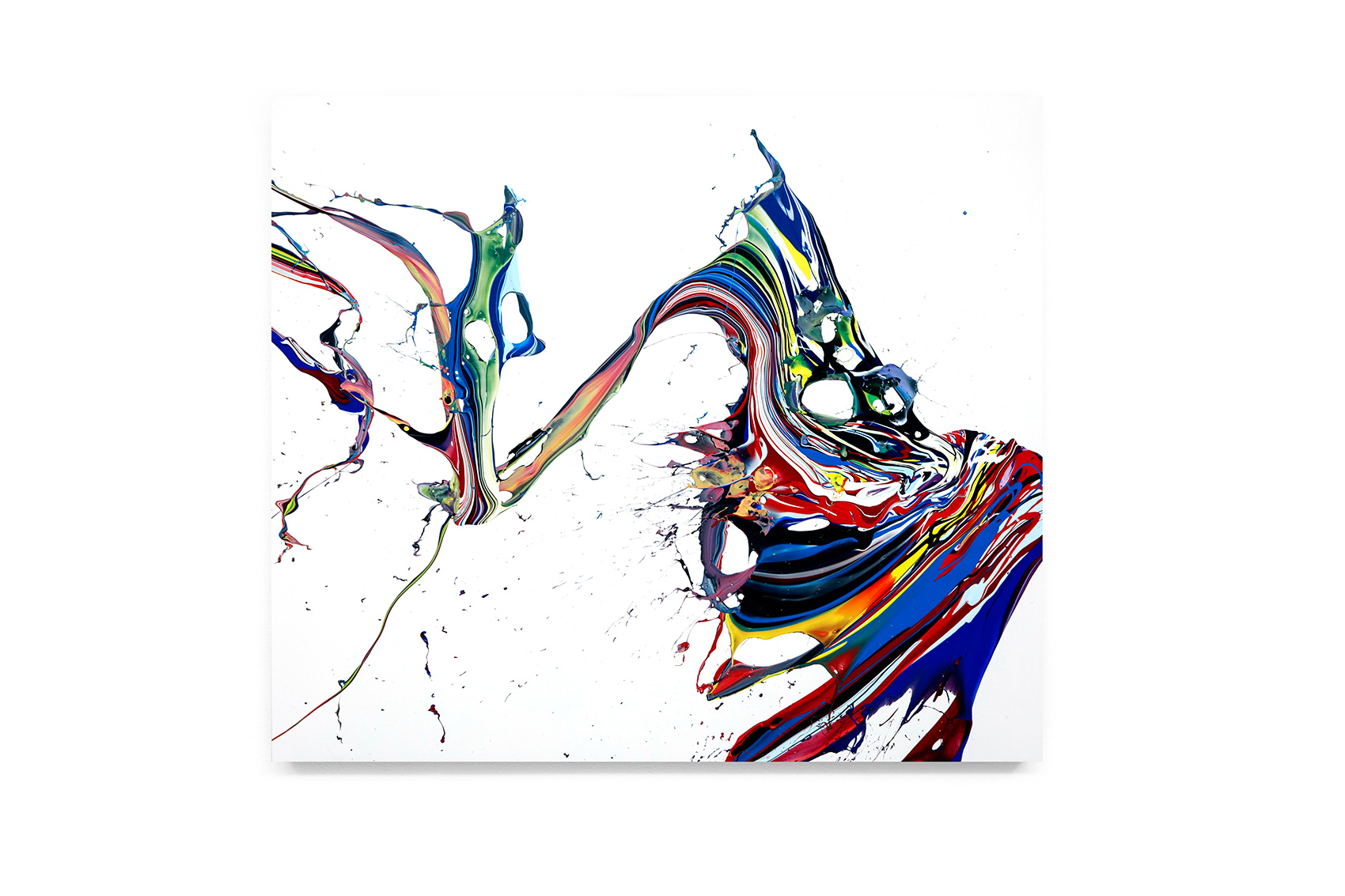
With this technique, I pour different layers of paints, which fold, unfold, bend, or even stretch on the canvas. Liquids flow onto the fabric, and the different elasticities of materials cause a set that looks like a landscape. I named them the Dreamliner series, and from a technical standpoint, the lines appear quicker depending on the inclination angle of the canvas, roughly 60-90 degrees when leaking the acrylic material.
Also, I often splash or throw paint onto the canvas. It always comes with some kind of choreography of movement and I need to prepare myself for days before performing this action. It is my way of rendering the complexity of detailing into the fraction of a second as my gesture, angle and speed unite. It demands a very accurate and balanced physical attention. During that time, I am more than focused, I have trained for days before coming into production, because I need to control all of my muscles, the weight of the barrel I carry, the angle I’ll throw paint onto the canvas, in what position, at what speed and which angle it will fall on the fabric. It is the moment of my creation where my body and my mind flow together. As I “catch” speed, I tend to fix it on the canvas. I feel satisfied when I see a whole galaxy of details appear in a matter of a nanosecond.
Have you always preferred this method, or did it come as an epiphany?
I come from an athlete’s background; it is part of my heritage. My grandfather competed in the 1952 Olympics in Helsinki as a discus thrower. There is something very familiar in the way I need to train prior to my period of production: get in shape, eat healthy and restrain myself from distraction to be both mentally and physically prepared. Then, of course, the "throwing" gesture, which clearly came to me instinctively.
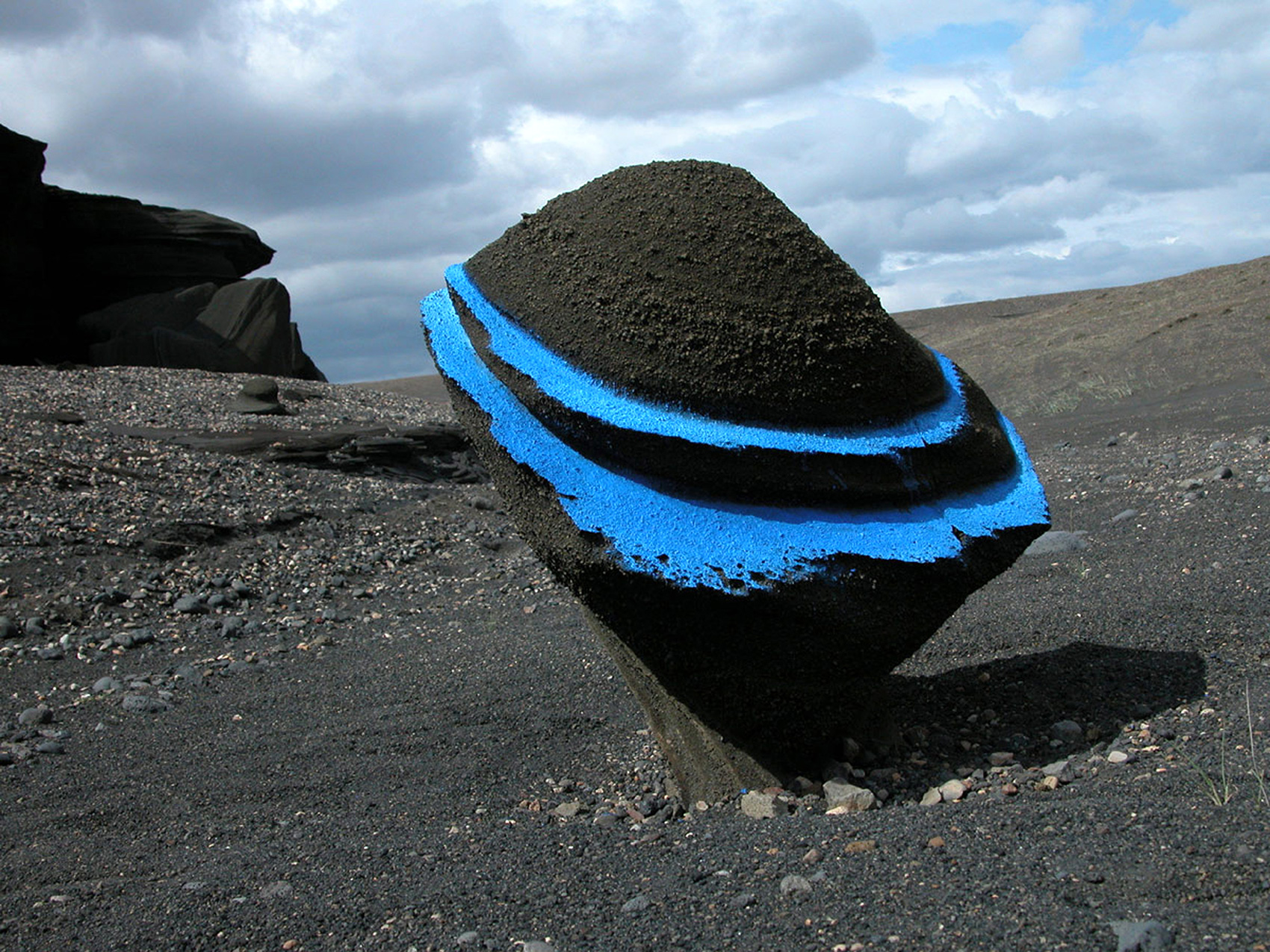
Do you maintain a spiritual practice or type of meditation that is significant in your life?
I tend to compare my production process with some kind of yoga practice. It is my meditation routine, my very own way of disconnecting from my day-to-day habits in order to keep pace with my creative results. While doing so, I literally extract myself from the buzzing outside world, going down in the basement of my studio, quieting the circular, noisy energy that surrounds us. It helps me to connect with my materials and the canvas. I don’t answer the phone or my emails; I get totally disconnected to get in touch with my creative mindset. The only things I pay attention to are my pace, my breathing, and how my body and muscles feel connected to my mind.
Explain how mental and physical preparation determine the outcome of the paint once it is in contact with a surface. Does the process vary from piece to piece?I need to be extra focused, and depending on my shape, it can take a few days before getting things to happen in a way that is satisfying on the canvas. My physical preparation is as important as the mental one. Indeed, I need to get in shape before getting into production: stretching, focus and determination. At the end of the day, after moving so many barrels of paint and lifting great weights, my muscles get sore and tired. It’s exhausting, so this is why you need to be physically prepared. The methodology is quite the same, though. I cut myself from any distraction of my canvas. Containment is the key. You focus on your breathing with no interference allowed. It is some kind of routine, where everything needs to be prepared and measured to balance the unpredictable way my materials react between each other.
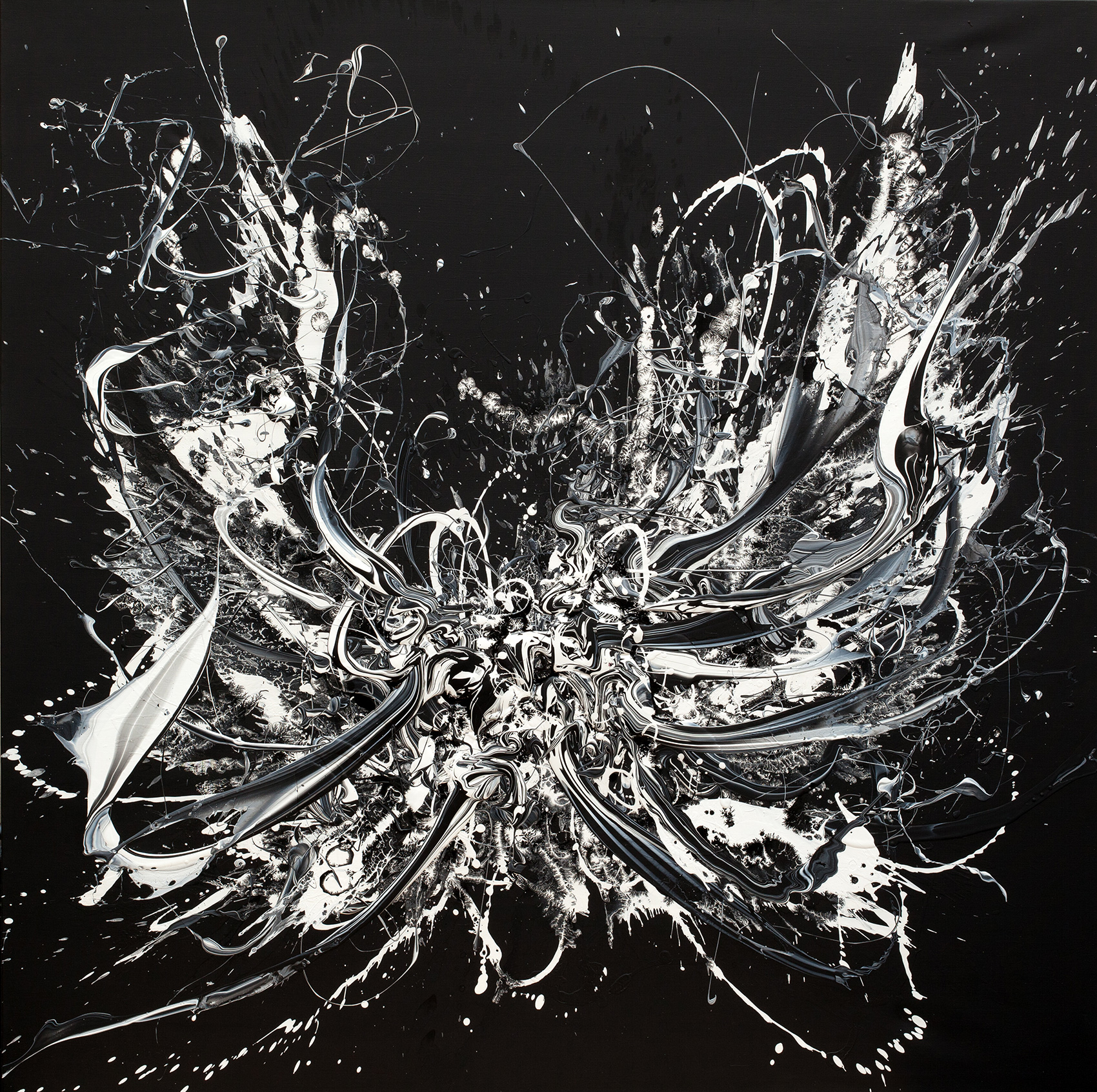
Do you find yourself adhering more to the “natural phenomena” of the process?
I’ve come to the point where I know my materials and have experimented enough to be able to expect rendering, to some extent. I basically work with my instinct and trust my senses most of the time, but the best surprises occur when I’m being spontaneous. The result is never entirely expected, and this is the kind of surprise I’m looking for.
I like to discuss the relationship in painting between the creator and creation, as well as an individual’s management of that dialogue. Can you describe how you balance premeditation and improvisation as you form the image itself? I can imagine it unfolding like a dance, with the same balance of movement one would have when leading or being led by their partner.
I wouldn’t know exactly who’s leading who, though! The “accidental” part in the rendering of my work is extremely important since I have full mastery of the combinations of material and colorimetry, but I have no real control over the outcome.
So, inevitably, the unknown is always involved, and it’s so exciting! Serendipity always brings a result beyond my initial expectations. It is this balance that I seek: between the very precise, meticulous anticipation and instinct, linked to the chemistry of my materials, and the near-immediate result that comes from spontaneity and the way my colors interact with themselves.
It’s always surprising to see how unpredictably my materials are reacting with each other, and it is inherent in my work. I never fully anticipate my creations; the materials have their own way to react. Depending on how long they’ve been prepared, they act differently in the hours and the angle I throw them from, their own “chemistry” always impacting the results. I’m not overthinking when working, otherwise this would mean the demise of my creative process! Everything is a question of balance between my instinct and accepting the fact that my materials work in mysterious ways!
At Tech Open Air in Berlin this July, you participated in the Little Sun Projects, where artists were asked to create works with solar panels as the medium in an effort to help children in Rwanda and raise awareness about the benefits of renewable energy. As opposed to Land Art, this offers you a unique opportunity to ponder your relationship with both the sky and natural light phenomena, such as the northern lights. I would assume that you, like other great Scandinavian artists, have been influenced and, at times, defined by your proximity?
Well, both aspects of the projects seemed very important to me. First, because I am mother to a seven-year-old son and am very aware of the importance of education. This project originates from constructing a school for children from a secluded area. No matter where you are born, education is the very basis of development, the core foundation of development. Then, the lighting from renewable energy systems, provided by the Little Sun project, came to me as more than necessary! This part of the world doesn’t have access. They still study in the evening with the help of kerosene lamps.
And, of course, because of my origins in Iceland, I am well aware of the importance and the benefits coming from a clean and unpolluted environment. Solar energy is one of many ways to fight against fuel burnings and pollution that come with these old industrial systems. As it became essential to take part in this project, I was inspired by the northern lights we get to see at night in Iceland and the Scandinavian area. This kind of metaphor appeared interesting to me. Aurora Borealis only appear at night, and they become visible in a clear, unpolluted sky.
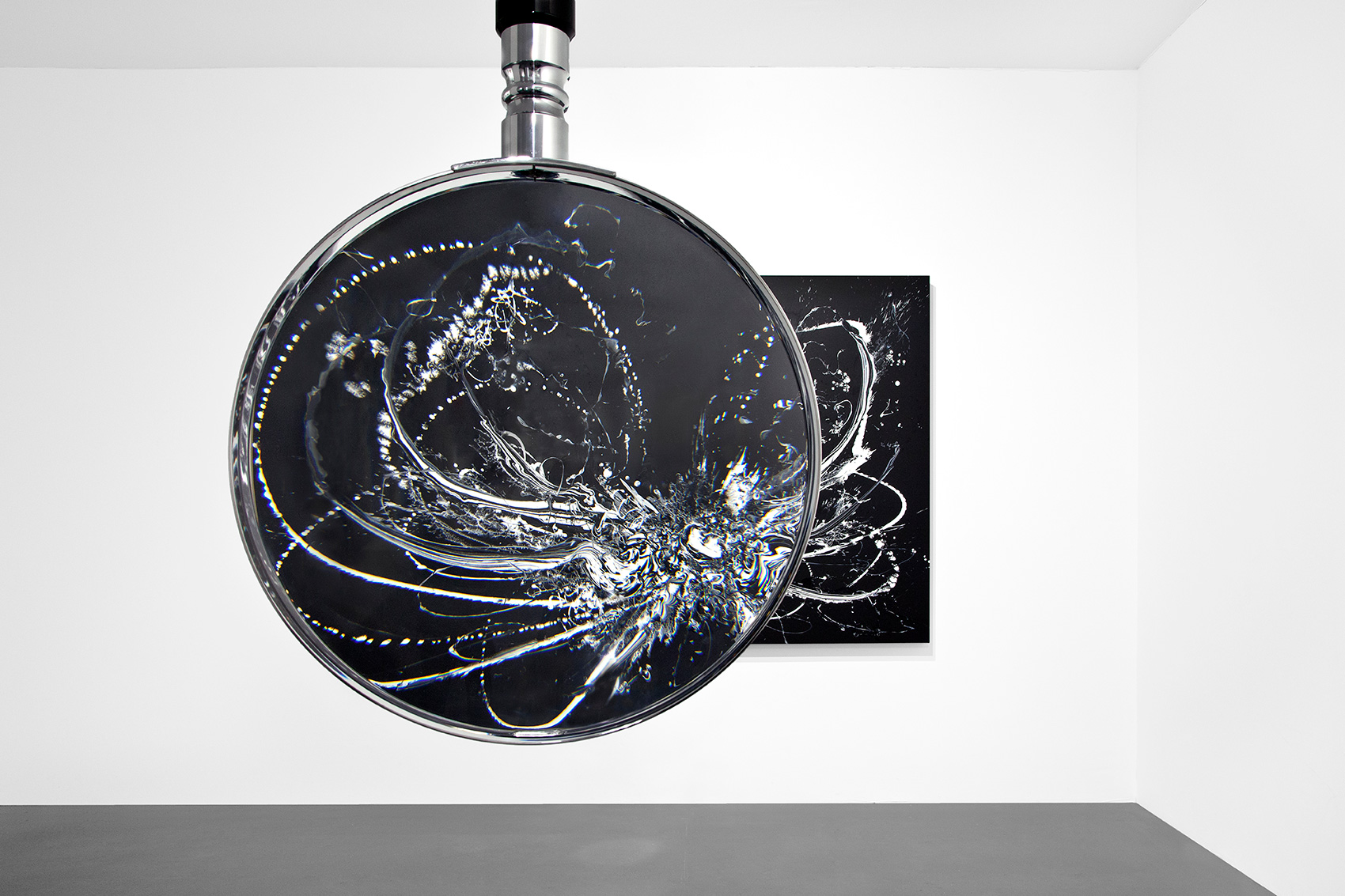
Do you think contemporary artists should have a role in the dialogue relating to environmental conservation? In the present day, where businesses, scientists and entrepreneurs attempt to collaborate with both governments and consumers, what do you think the duty of the creative class should be?
If you get the chance to express your voice, no matter the means, it needs to be heard. So, yes, artists can also have effective input in the discussion about environmental conservation. As we are echoing our society’s change and views, giving a reflection on our times, I feel like we can help raise consciousness about climate change. And I’m seriously thinking about collaborating with scientists for my future works to give more impact to my color alphabet. I can translate facts and data with my own expression, and the credit I’ll get from a scientific validation seems to me as important as my body of work. This is the kind of collaboration I find very inspiring and will be seeking in the future.
How do you see your future work fulfilling both utilitarian and aesthetic functions?
You know, I’ve always seen my paintings as a top view on our mother Earth, or images of our function as particles of the universe, where we all have our function. Through my statements, I tend to bring awareness about climate change and consequences from dwindling supplies. I believe art is a very powerful tool and a great source of inspiration, to feel as a sort of guidance... As I like to say, “Art is food for thought.” It’s a continuous challenge in my creative process, in how my ideas and views on an upcoming crisis get translated. I’m increasingly thinking about new means to express my concerns and raise consciousness about our planet’s state, pollution and climatic stress; I come from a land where the air is mainly unpolluted, and where government has taken real actions against global warming for decades. My upcoming project is a sculpture, through which I will discuss the water resource crisis.
As an artist, I do feel we can play an effective role in bringing people to ask themselves the questions we raise through our statements. I am dreading the crisis our planet is going to face in the future, I feel like it is my responsibility to actively point out my views.
katabox.com





